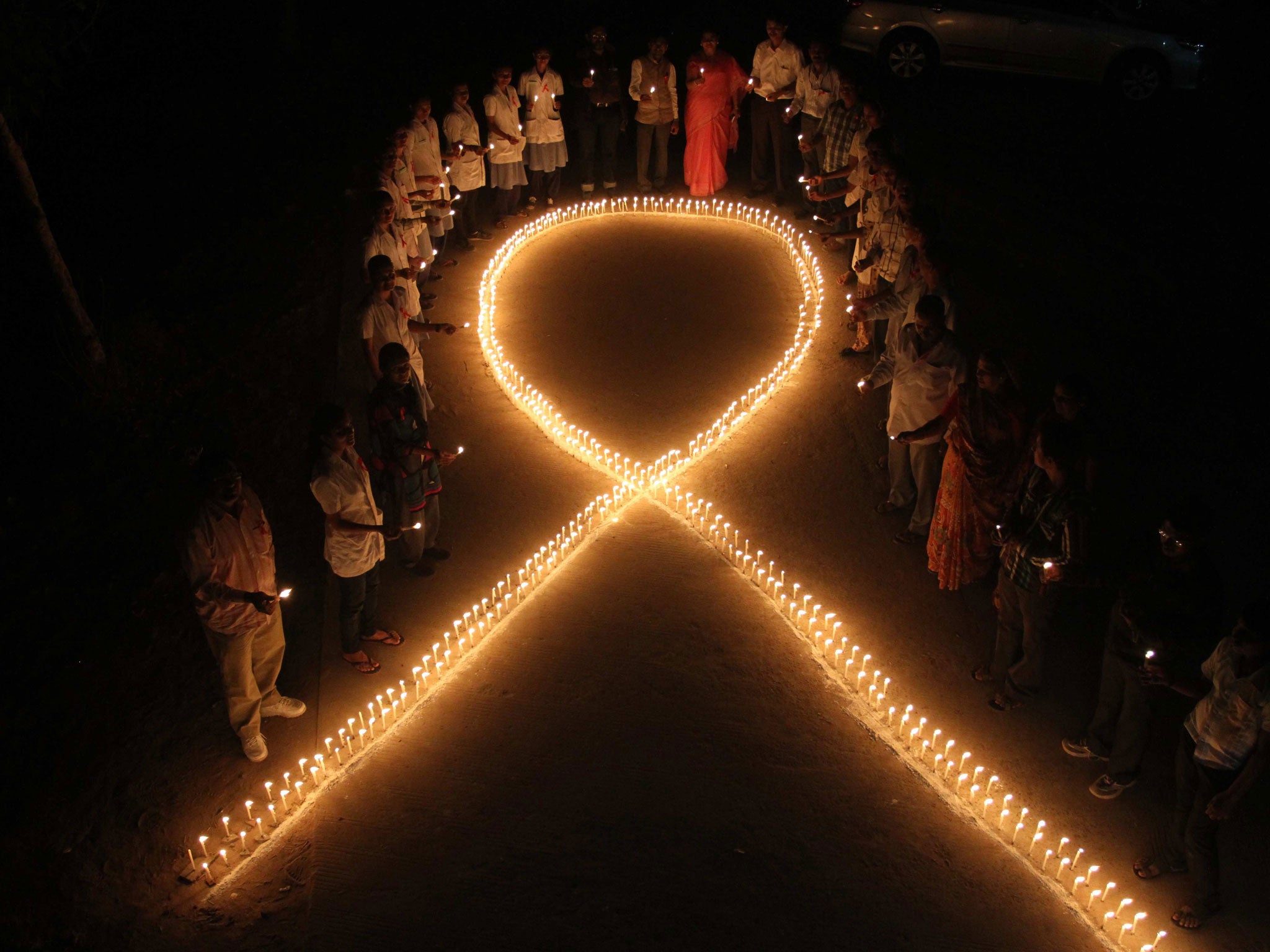We can make ‘Ending AIDS’ more than just a slogan
Too many people have been excluded from our global fight against the virus, and that needs to change immediately


Your support helps us to tell the story
From reproductive rights to climate change to Big Tech, The Independent is on the ground when the story is developing. Whether it's investigating the financials of Elon Musk's pro-Trump PAC or producing our latest documentary, 'The A Word', which shines a light on the American women fighting for reproductive rights, we know how important it is to parse out the facts from the messaging.
At such a critical moment in US history, we need reporters on the ground. Your donation allows us to keep sending journalists to speak to both sides of the story.
The Independent is trusted by Americans across the entire political spectrum. And unlike many other quality news outlets, we choose not to lock Americans out of our reporting and analysis with paywalls. We believe quality journalism should be available to everyone, paid for by those who can afford it.
Your support makes all the difference.For the last few decades, those of us in the fight against the spread of HIV/AIDS have rallied around two powerful words: Ending AIDS.
And while we are closer to that goal than we have ever been, another set of words threaten to undermine so much of our progress: Left Behind.
In most communities, people who inject drugs still don’t have access to clean syringes, opioid substitution treatment, or naloxone to prevent overdose and the spread of infections. Moreover, many people who inject drugs are still denied access to basic health services, non-judgmental primary care, mental health and drug treatment services, and the support they need to maintain stable and healthy lives.
How can it be that over the past 15 years science has delivered approximately 14m antiretrovirals to people living with HIV, but still managed to exclude 96 percent of people who inject drugs?
The evidence has long been in: harm reduction is extremely effective in curbing HIV transmissions. It was endorsed long ago by the Joint United Nations Programme on HIV/AIDS, the UNAIDS and the World Health Organization (WHO) as a vital tool in the global response to the epidemic.
In places where comprehensive harm reduction has been implemented, HIV rates among people who inject drugs are the lowest and in some cases almost negligible. It was the primary reason that the HIV/AIDS epidemic among drug users in cities like London, San Francisco, Sydney, Amsterdam and Berlin was avoided when AIDS first surfaced in the early 1980s.
We need to continue to apply that evidence now, especially in certain regions where intravenous drug-use is on the rise and has the potential to undermine progress.
East African countries like Kenya and Tanzania are cases in point. Further HIV infections in sub-Saharan Africa driven by drug use are as concerning as they are avoidable. Luckily, both are implementing programs around harm reduction. Tanzania has opened methadone and clean needle exchange services and Kenya has expanded access to needle and syringe programmes. However, it is critically important that these interventions be scaled up and adopted across the region where similar patterns of drug use may be emerging.
International and national funding is also essential for these services to continue. The UNAIDS estimates that $2.3bn is needed annually to fund global preventative measures among people who inject drugs. Unfortunately, at the last estimate, only a fraction — $160m — has been invested by international donors. And despite the epidemiological need and the willingness of the national governments to step in and cover the remaining funding gaps, more countries are becoming ineligible for international donor support due to their middle-income status.
Unless fundamental changes are made in donor priorities, matters are set to worsen.
Too many people are being left behind and left out in the Americas, in Africa, in Asia, and in Eastern Europe.
Every person left behind is a fellow human being – someone’s child, someone’s parent, someone’s friend, someone’s partner. Every one of them has a right to life and to health. Every one of them deserves compassion, and dignity, and love.
As we look back on all of the important progress we’ve made in recent years, we must remember that "Ending AIDS" must be much more than a slogan.
It must be a well-funded vision, grounded in science and implemented in a manner that will reach all who are in need. Because to truly End AIDS, we must make sure that no one is Left Behind.
David Furnish is the Chairman of the Elton John AIDS Foundation. This is an edited version of his foreword to the Global State of Harm Reduction 2014 report launched today by UK based NGO Harm Reduction International.
Join our commenting forum
Join thought-provoking conversations, follow other Independent readers and see their replies
Comments